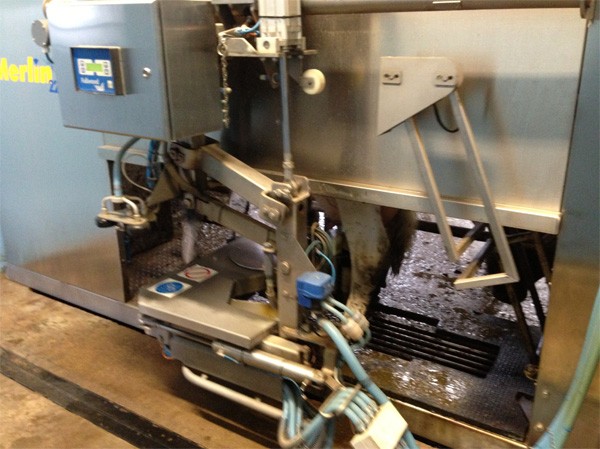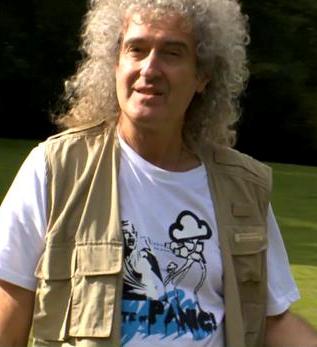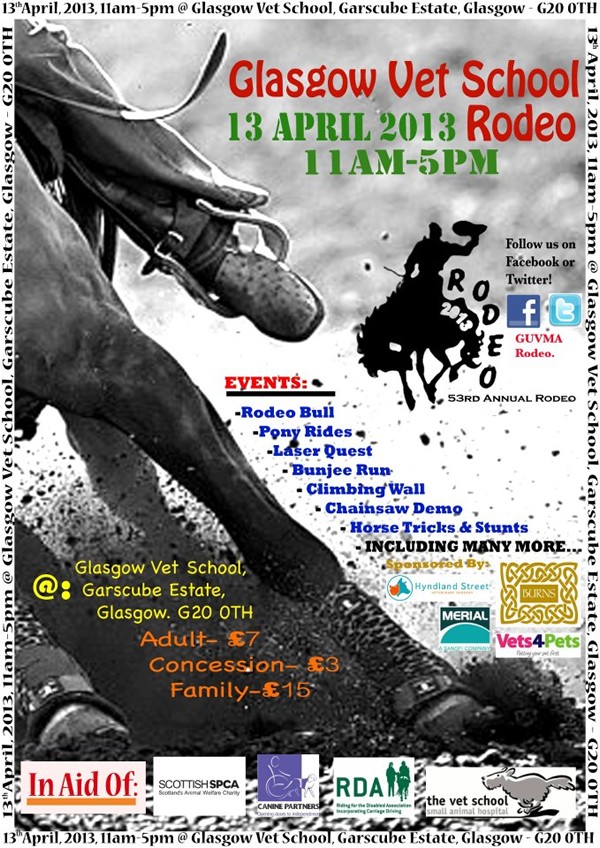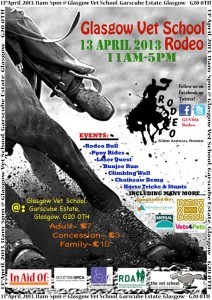
Having received my results for the professional exams, I can finally say that I’ve finished my first year at vet school!
Being brutally honest, the first term was a bit of a culture shock. I had focused so much on getting into vet school and being a vet that I didn’t really think about what it would be like when I actually got there.
Coming from a town on the edge of the countryside in the heart of England and moving to Glasgow was quite a change. Although the vet school is on the edge of the city in a fairly green area, it wasn’t the same as being able to cycle 10 miles on quiet country roads to the farm where my horses are kept.
I think what I found the hardest was not being able to ride. I had gone from riding my horse every day to having a lesson with the uni riding club once a week. Owning a horse is a lifestyle, and not something I wanted to give up.
While the first term was largely spent getting used to the mountainous workload, I managed to squeeze other things into my time. Many of my friends from home went to uni a year earlier than me and have told me that Fresher’s Week is the craziest uni experience. But none of them are vets, and they don’t know what AVS Sports weekend is (an annual event hosted by the Association of Veterinary Students). This year, it was held in Glasgow, so we didn’t do any traveling, but certainly experienced the madness of meeting people from every other vet school, who came in all shapes and sizes – penguins, mimes, power rangers and more.
Another annual inter-vet-school event for us is Dick Day, where Glasgow competes against Edinburgh – The Royal (Dick) School of Veterinary Studies – in various team sports. Again, this year, it was held in Glasgow. Unlike AVS, the sport on Dick Day is serious and there was a strong sense of rivalry between the schools. I was part of the vet hockey team, but unfortunately we did not defeat the Dick vets in our match.
After battling through a long term of learning at a hundred times the rate we were used to and facing the stress of the class exams, I started the second term knowing better what to expect. I threw myself into getting fit for Easter by swimming, cycling and gyming. I also took up a weekly creative writing class that was put on by the Glasgow uni English department, to rekindle my love of writing.
At Easter, I had my first taste of EMS in the form of my first time lambing. The placement was great – we got loads of hands-on experience and got involved in all aspects of lambing time. We learnt loads, and everything from those seemingly endless sheep lectures started to sink in. Although tiring, we enjoyed every bit of it.
I also spent a week in Norway doing a charity dog sledding challenge to raise money for the Warwickshire and Northamptonshire Air Ambulance, who saved my life when I had a serious riding accident two years previously. My family and I had spent a year raising money by doing bucket collections, making Christmas decorations, selling Valentines Day cupcakes, and selling bedding plants. The challenge was fantastic – I loved working with the dogs and getting to see the beautiful Arctic landscape.
However, the day after I landed back in the UK, I was driving back to Glasgow to face revision and the end of year professional exams. I especially began to feel the pressure, because I had arranged to be abroad during the summer when resits would be scheduled (not a wise move, and not something I’d recommend).
We had exams in five subjects: anatomy, physiology, biomolecular sciences, animal husbandry and veterinary professional and clinical skills (VPCS). While I felt most of them went OK, I was almost certain I’d mucked up VPCS after the first day of practicals, having gotten flustered and putting sharps in the wrong bin (we make such idiots out of ourselves when we’re nervous).
During the first month of the summer holidays (while avoiding thinking about the inevitable doom that results would bring), I did some dairy EMS. I’d never been on a dairy farm before and found the experience extremely useful in improving handling skills and my understanding of the dairy industry. I was pleasantly surprised by how much I’d retained from the two cattle lectures we’d had so far.
Without warning, our results started to trickle in, one subject at a time… and so began the momentary relief after receiving one and then the rising anticipation for the next one. Finally, the last one came in, and by some miracle (or so it felt), I had passed all of them! All that worrying about being away for resits was extinguished, and now I could get on with preparing for the next set of EMS I had planned… six weeks in Bolivia in a wildlife sanctuary.
And so I have passed first year. It’s been hard work and no doubt second year will be harder, but vet school hasn’t defeated me yet!
















